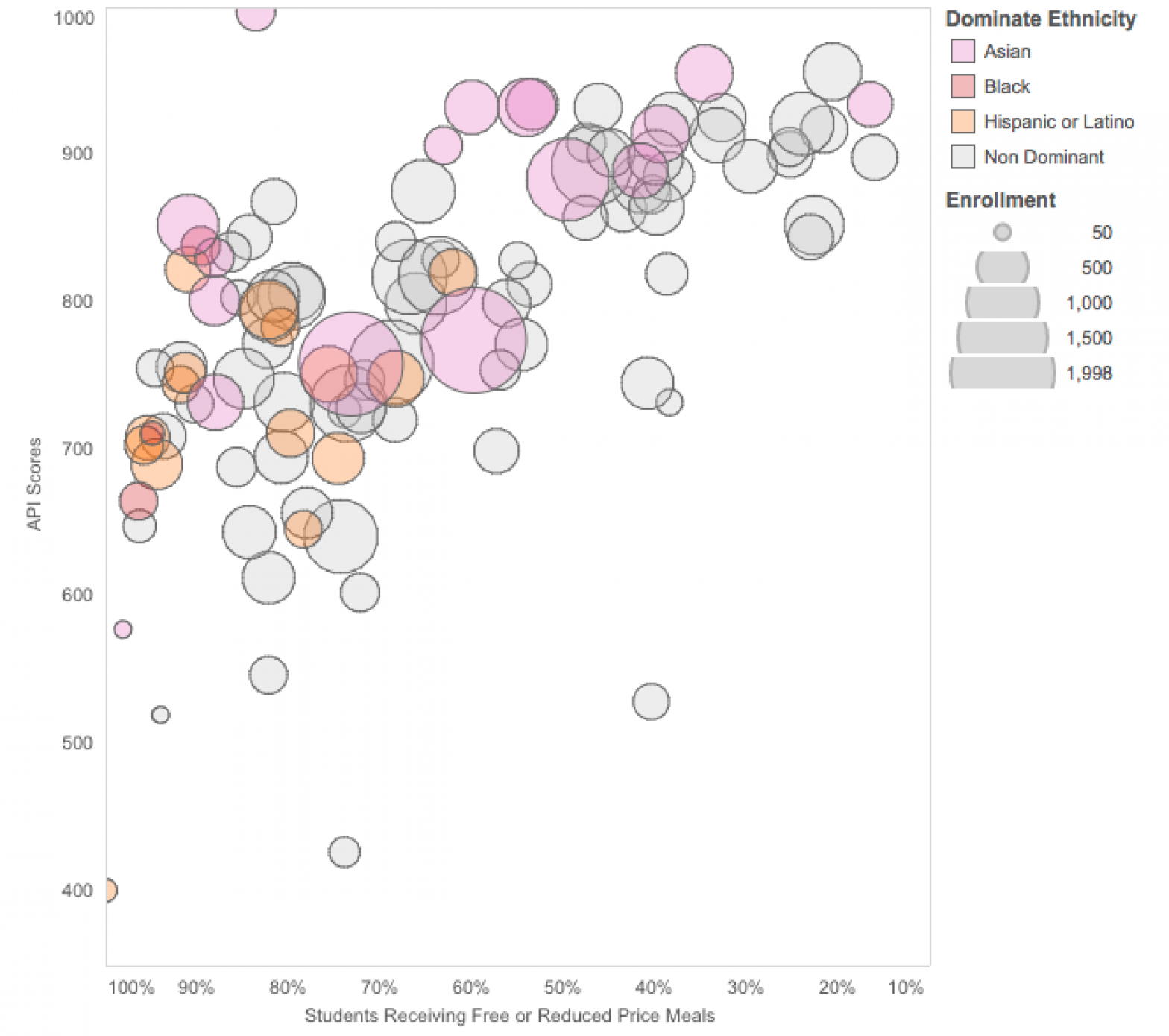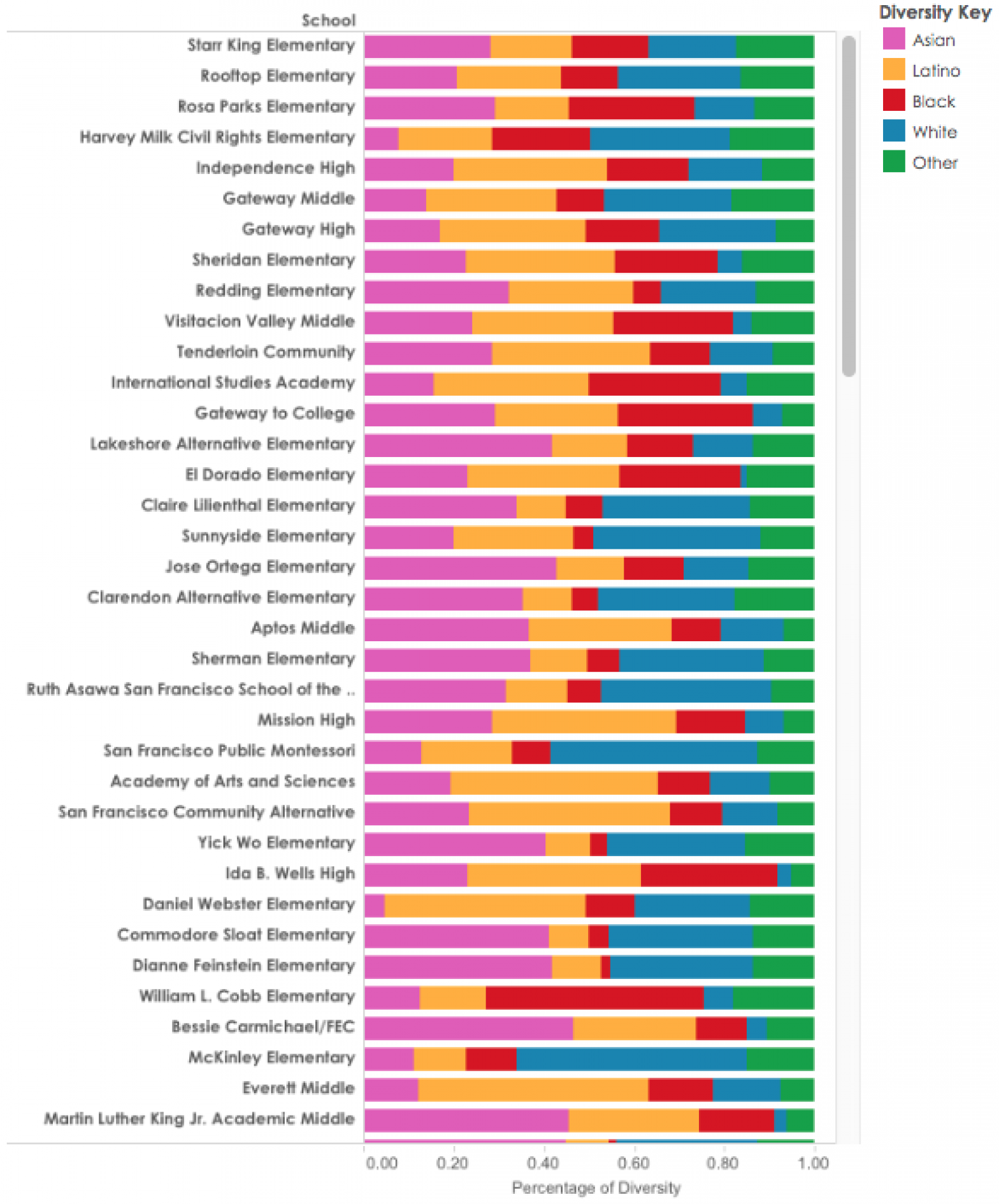Choice Is Resegregating Public Schools
Isolated Schools Clustered by Test Scores, Family Income
If one looks at the San Francisco Unified School District as a whole, a clear pattern emerges: Schools with the highest level of achievement tend to have the lowest levels of family poverty. And schools that are identified as “racially isolated” are visibly clustered by both income and achievement. This plot shows the base Academic Performance Index for each school in the district for which data are available, as well as the percentage of students poor enough to qualify for free and reduced-price lunches, which are used as a proxy for measuring poverty.




